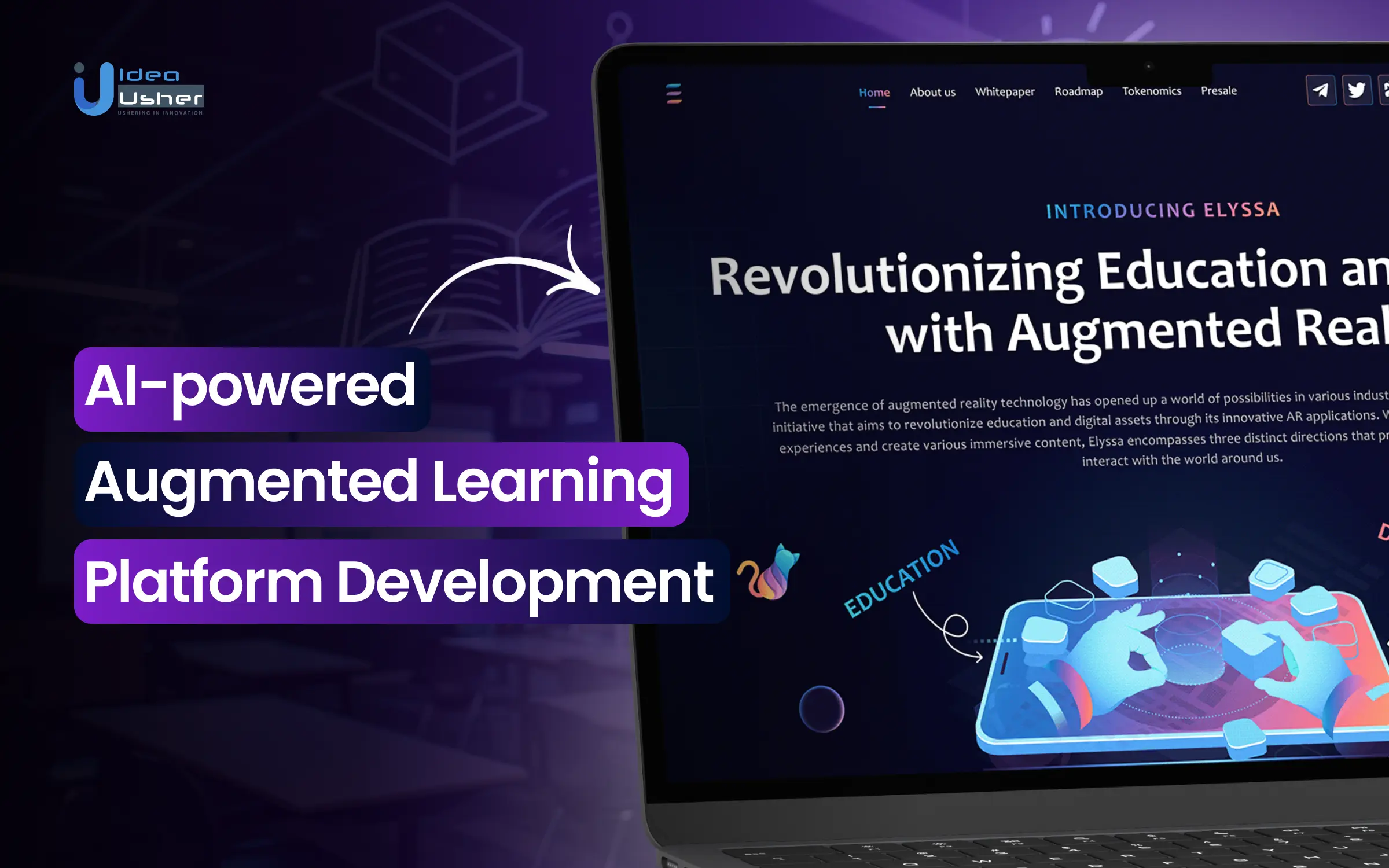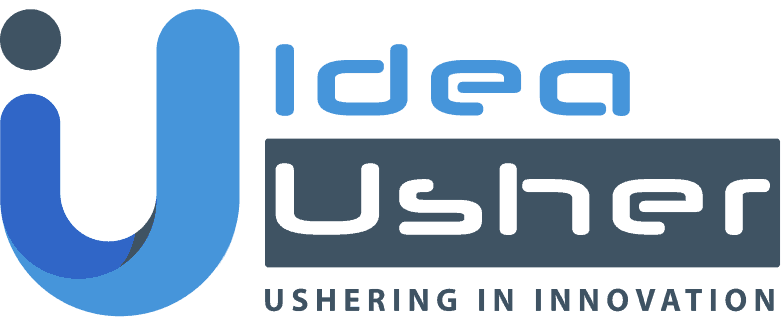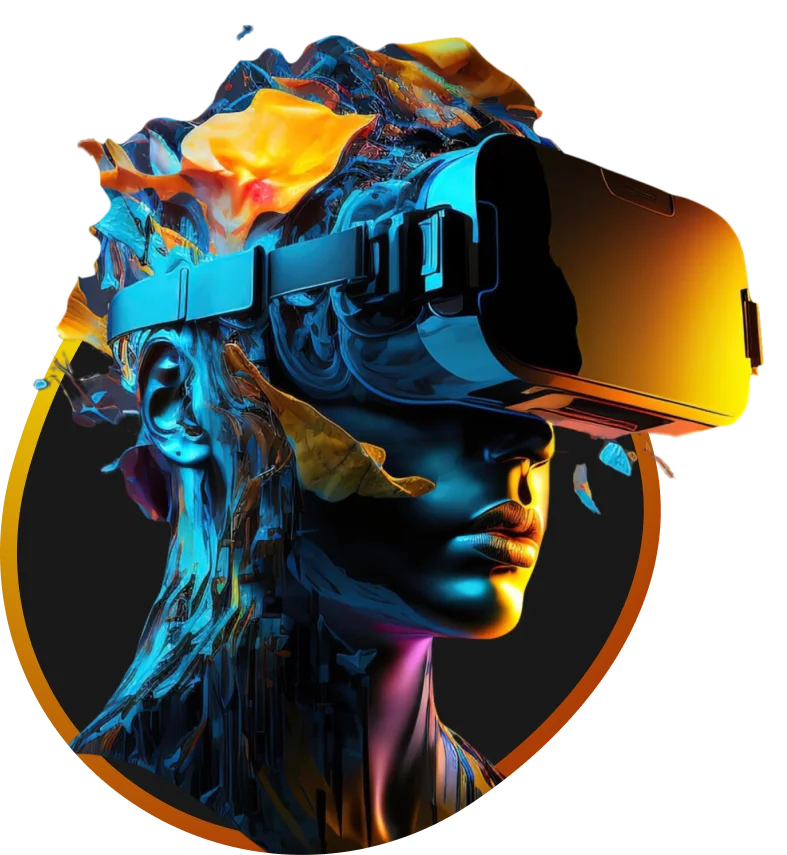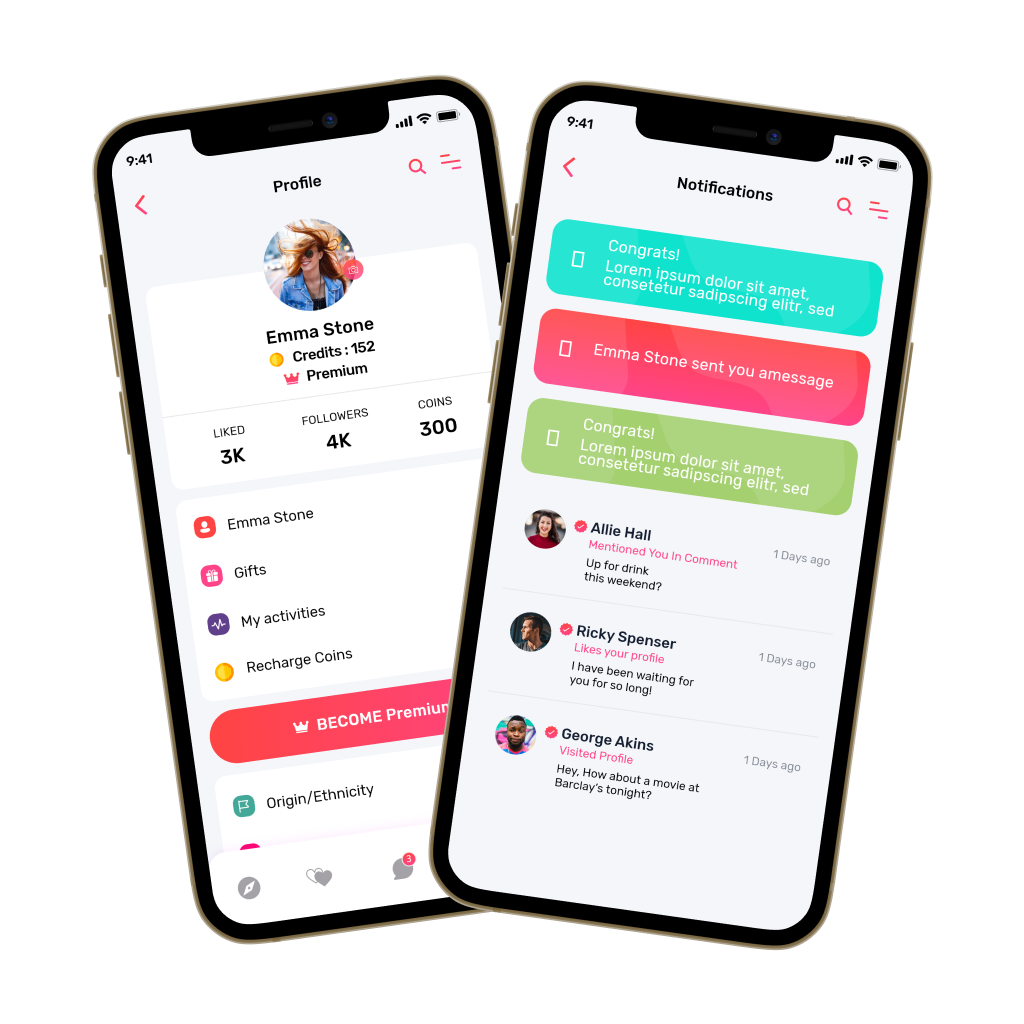Learning today goes far beyond traditional textbooks and pre-recorded video lessons. Modern learners expect experiences that adapt to their pace, respond to their progress, and keep them engaged from start to finish. As education continues to shift toward digital formats, artificial intelligence is emerging as a key driver of this transformation.
AI is not just changing how people access information; it is redefining how they interact with content. With the help of adaptive learning models, real-time feedback, and intelligent tools, AI-powered platforms make the learning process more personalized, efficient, and impactful. Whether someone is trying to master a subject or build a new skill, these platforms offer meaningful support at every step of the journey.
In this guide, we will explore what it takes to build an AI-powered augmented learning platform. From understanding the essential features and development process to reviewing a detailed cost breakdown, this blog will walk you through everything needed to turn your vision into a scalable, high-impact educational product.
Understanding the Market Growth of AI Augmented Learning Platforms
The rise in demand for intelligent, data-driven learning solutions has placed AI-augmented platforms at the center of global education reform. In 2023, the estimated market size for AI in education reached USD 3.6 billion, and it is projected to grow to USD 73.7 billion by 2033 at a compound annual growth rate (CAGR) of 35.10%. This trend reflects a growing shift toward personalized, adaptive learning environments across both academic and corporate sectors.
Platforms like ELSA Speak have shown how AI can significantly enhance language learning, especially for non-native speakers. By offering real-time feedback on pronunciation and fluency, ELSA helps learners improve their speaking skills in a personalized, self-paced manner. The platform uses AI to analyze speech patterns and guide users through targeted lessons, which keeps them engaged and motivated.
Another strong example is Carnegie Learning, which has developed an AI-driven platform called MATHia. This system delivers real-time personalized math instruction, responding to a student’s inputs and learning behavior. Schools using MATHia have reported measurable gains in test performance and long-term content retention.
Institutions such as Arizona State University are also actively integrating AI copilots into virtual classrooms. Through collaborations with platforms like Zoom IQ, students benefit from features like live transcription, real-time lecture summaries, and AI-generated notes. These tools improve engagement and help faculty track student participation and learning patterns more effectively.
Why Investors Should Invest in AI-Augmented Learning Platforms
AI-augmented learning platforms offer an opportunity to support scalable innovation in education while generating long-term business value. Their ability to improve learning outcomes, reduce operational costs, and support upskilling efforts across industries positions them as a high-potential investment for forward-looking investors.
A. Enhanced Learning Outcomes
These platforms enable real-time personalization by using learner data to adapt lesson content, difficulty levels, and feedback. This has been shown to improve academic performance and learner satisfaction significantly. For instance, Century Tech reported a 30 percent improvement in student outcomes where its adaptive learning systems were used, alongside a noticeable drop in disengagement.
B. Operational Efficiency
AI can streamline administrative processes, including grading, attendance, scheduling, and content creation. This reduces manual effort for educators and allows them to focus on instruction. Enterprise training platforms such as Sana Labs are already applying these principles to help organizations scale training programs more efficiently, with lower overhead and better learner outcomes.
C. Alignment with Workforce Development
AI-augmented platforms are increasingly being used to align academic learning with workforce needs. Tools like Degreed and LinkedIn Learning leverage AI to deliver personalized learning paths that focus on in-demand skills, helping users build career-relevant expertise. These platforms support microlearning, certifications, and performance tracking, making them valuable for both individuals and employers.
D. Competitive Advantage
Institutions and companies that implement AI-augmented learning gain a clear edge in learner experience and retention. Advanced tools such as adaptive assessments, progress visualizations, and AI coaching help set platforms apart in a crowded market. Pioneers like the Minerva Project have successfully built global recognition by blending AI with experiential learning methods, creating immersive and responsive educational models that serve modern learners more effectively.
What is an AI-powered Augmented Learning Platform?
An AI augmented learning platform combines the power of artificial intelligence with digital learning tools to create highly personalized and adaptive educational experiences. Unlike traditional eLearning platforms that offer static, one-size-fits-all content, these platforms use real-time data and intelligent algorithms to tailor learning paths based on the unique needs, pace, and behavior of each learner.
These platforms go beyond delivering content. They analyze how students interact with material, identify knowledge gaps, and offer intelligent support at the right moment. This dynamic approach enables learners to progress more efficiently while gaining a deeper understanding of concepts.
Key Differences Between Traditional eLearning and AI-Augmented Learning
Traditional eLearning platforms follow a one-size-fits-all structure. Learners move through predefined lessons in a fixed order, with little room for adjustment based on their performance or preferences. This approach often overlooks individual needs, which can lead to frustration, slower progress, or lack of engagement.
AI-augmented learning, on the other hand, takes a more responsive approach. These platforms use learner data to adapt the content in real time, adjusting the difficulty level, pacing, and format to match how each person learns best. This not only helps learners grasp concepts more effectively but also keeps them more focused and motivated throughout their learning journey.
Benefits of AI-Augmented Learning
AI-augmented learning platforms offer tailored experiences, keep learners actively involved, support large-scale delivery, and make education more accessible to diverse audiences.
A. Personalized Learning
AI-augmented platforms adjust learning content based on how each learner performs and interacts with the material. By recognizing strengths, weaknesses, and pace, the platform creates a custom experience that helps individuals learn more efficiently and reach their goals faster.
B. Stronger Learner Engagement
These platforms go beyond static lessons by incorporating interactive features such as real-time feedback, gamified progress tracking, and dynamic lesson formats. When the content feels relevant and interactive, learners are more likely to stay engaged and retain what they learn.
C. Scalability Without Compromise
AI systems are capable of delivering a tailored learning experience to large groups of users simultaneously. This means institutions can scale their programs without increasing their reliance on instructors, maintaining high-quality learning at a much larger scale.
D. Inclusive and Far-Reaching Education
By adapting to different learning needs and reducing barriers, AI-powered platforms help make education more accessible to people from diverse backgrounds. Whether a learner needs extra support or is moving at an accelerated pace, the system adjusts to ensure no one is left behind.
Key Features of an AI-powered Augmented Learning Platform
Designing an AI-augmented learning platform in 2025 requires more than adding artificial intelligence to existing models. It involves intentionally combining advanced technologies to create a learning environment that is personalized, scalable, and engaging. Below are the essential features that define a high-performing AI-powered education platform today.
1. Adaptive Learning and Personalization
This feature allows the platform to adjust content, pacing, and learning paths based on each learner’s unique progress and performance.
Dynamic Learning Paths: The platform continuously monitors learner activity such as quiz scores, engagement patterns, and time spent on lessons. It then adapts the pace and complexity of the content to match each learner’s progress, ensuring a tailored learning experience.
Customized Content Recommendations: By analyzing user behavior and goals, the system recommends lessons, exercises, and resources that match individual learning needs. These recommendations evolve as the learner progresses, helping maintain relevance and interest throughout the journey.
2. Intelligent Tutoring Systems
AI-powered tutors provide real-time assistance, guiding learners through concepts and answering questions just like a human instructor would.
AI-powered Virtual Tutors: Virtual tutors provide round-the-clock support by guiding learners through problems, answering questions, and offering explanations in simple language. They simulate a one-on-one learning experience and adapt based on learner interaction.
Immediate Feedback Mechanisms: Learners receive timely and specific feedback on their answers and progress. This helps reinforce correct understanding and allows the platform to address mistakes before they become learning gaps.
3. Advanced Analytics and Predictive Insights
Built-in analytics help educators track progress and identify learners who may need extra support before issues arise.
Learning Analytics Dashboards: Administrators and educators can access dashboards that track key data like attendance, quiz results, course completion rates, and engagement trends. These insights allow for informed decision-making and targeted interventions.
Predictive Modeling: Machine learning models can forecast student performance and detect early signs of disengagement. Educators can use this information to offer additional support or resources before learners fall behind.
4. AI-Generated Microlearning Modules
Short, targeted lessons are automatically created to help learners focus on specific skills or concepts quickly and efficiently.
Automated Content Creation: The platform can generate short, focused lessons aligned with specific learning outcomes. These modules are ideal for busy learners who need to master concepts in small, digestible chunks.
Continuous Content Updates: Educational materials are updated automatically to reflect changes in curriculum standards, learner feedback, or industry developments. This ensures the content remains relevant and up to date.
5. Natural Language Processing Capabilities
With NLP, learners can interact with the platform using natural conversation, making the experience more intuitive and accessible.
Conversational Interfaces: NLP allows learners to interact with the platform through chat or voice in everyday language. This creates a more natural experience and lowers the barrier to asking questions or seeking help.
Multilingual and Accessibility Support: Built-in translation and text-to-speech capabilities expand access for learners who speak different languages or have visual or reading difficulties. This broadens the platform’s reach and inclusivity.
6. Gamification and Engagement Tools
Interactive elements like points, badges, and challenges keep learners motivated and make learning more enjoyable.
Interactive Learning Elements: Game-based elements such as points, levels, badges, and challenges make the learning process more enjoyable. These tools help sustain motivation and make progress feel rewarding.
Progress Tracking: Learners can view their goals, achievements, and milestones through clear visual dashboards. This reinforces self-awareness and motivates continued improvement.
7. Automated Content Curation and Management
The platform automatically finds, organizes, and tags relevant learning materials so users can access the right content at the right time.
Smart Resource Aggregation: The system searches a wide range of educational sources including articles, videos, and research papers. It selects the most relevant materials based on the learner’s level, subject, and performance.
Content Tagging and Organization: Automatically labeling and categorizing content allows users to find what they need quickly. It also helps educators build structured learning paths more efficiently.
8. Educator Support and Workflow Automation
Teachers benefit from AI-driven planning tools that simplify tasks like lesson creation, grading, and resource suggestions.
Lesson Planning Assistance: AI tools suggest lesson formats, resource links, and learning activities that align with student performance and educational standards. This helps teachers save time and improve the structure of their instruction.
Automated Assessment Generation: Educators can create customized quizzes and assignments for different levels of learners. These assessments are aligned with learning objectives and help measure progress consistently.
Work with Ex-MAANG developers to build next-gen apps schedule your consultation now
Development Process for an AI Augmented Learning Platform
Creating an AI-powered augmented learning platform involves a carefully structured process that spans research, design, development, and deployment. Each phase plays a critical role in delivering a scalable, intelligent, and personalized learning experience. The following guide outlines each step in detail, focusing on the practical considerations and technologies that enable a successful build.
Step 1: Market Research and Planning
The process begins with in-depth market research and strategic planning. It is essential to define the primary target audience, whether the focus is on school students, higher education learners, corporate training programs, or self-paced professionals.
Analyzing competitive platforms such as Duolingo, Sana Labs, Vitira, BetterGrow Up, etc. reveals what features are currently in demand and which areas are underserved. Identifying core functionalities like AI tutoring, AR-based simulations, microlearning, or gamification features helps in designing a product roadmap.
Compliance with GDPR, COPPA, and FERPA is essential. Business models should be defined early, with options including subscriptions, freemium models, or institutional licensing. A clear strategy at this stage ensures a strong foundation for the platform.
Step 2: Frontend Development
A responsive and user-friendly interface is key to learner engagement. Frontend development involves building interactive dashboards, video-based content delivery, and real-time progress tracking.
Frameworks like React.js and Angular are commonly used for web development. For mobile, Flutter and React Native provide cross-platform capabilities. Tools such as Figma and Adobe XD assist in crafting accessible and engaging user interfaces.
Step 3: Backend Development
The backend ensures secure access, scalable functionality, and stable performance. Core systems include user authentication, role-based access control, and a learning management system (LMS) for course delivery.
Back-end development typically uses Node.js or Django, with data stored in PostgreSQL for structured information and MongoDB for flexible, NoSQL storage. Stripe and PayPal are commonly integrated for secure payments. Hosting is often done via AWS or Google Cloud to ensure uptime and scalability.
Step 4: AI/ML Frameworks
Artificial intelligence enables adaptive learning and real-time personalization. Core features include automated content recommendations, NLP-based grading, and predictive analytics.
Popular frameworks include TensorFlow, PyTorch, Scikit-learn, and Pandas. For natural language capabilities, tools like Hugging Face, OpenAI APIs, and LangChain provide the foundation for chatbot interaction and text evaluation.
Step 5: AR/VR Integration
Immersive technologies bring interactive learning experiences to life. AR and VR tools are useful in subjects requiring spatial understanding, such as science, medicine, and engineering.
ARKit and ARCore are widely used for mobile AR development. Unity and Unreal Engine power VR simulations, enabling the creation of virtual labs, 3D environments, and hands-on training tools.
Step 6: AI Model Integration
After training, AI models need to be deployed efficiently and integrated into the user interface. Lightweight APIs built using FastAPI or Flask allow models to serve real-time outputs.
RESTful API connections ensure seamless communication with the front end. Challenges such as data bias are managed through diverse training sets, while GPU acceleration ensures fast performance.
Step 7: Full Platform Integration
At this stage, the front end, back end, AI modules, and AR/VR tools are combined into a single working system. Integration focuses on maintaining performance, synchronization, and interoperability.
Using CI/CD pipelines enables fast iteration and feature deployment. Optimizing for low latency and high concurrency ensures smooth performance even with a growing user base.
Step 8: Testing and Launch
Before launch, thorough testing is essential. This includes functional testing, AI model validation, and load testing to evaluate how the platform performs under pressure.
A beta release is often used to gather feedback from real users. A phased rollout allows for gradual user adoption and real-time bug fixes, ensuring minimal disruption. Careful testing and controlled deployment contribute to a smooth, reliable, and professional product launch.
AI-powered Augmented Learning Platform Development Cost
The cost of building an AI-powered augmented learning platform varies depending on project scope, features, and technology choices. Below is a breakdown of each development stage with estimated cost ranges.
| Development Step | Task | Description | Estimated Cost |
| Market Research & Planning | Idea validation and roadmap creation | Analyze audience, define features, review competition, plan monetization | $1,000 – $2,000 |
| Frontend Development | Web and mobile interface design | Build user interface using frameworks like React.js or Flutter | $8,000 – $12,000 |
| Backend Development | Server-side development | Set up authentication, CMS, and integrations using Node.js or Django | $10,000 – $15,000 |
| AI/ML Frameworks | Personalization engine | Develop adaptive models using TensorFlow, PyTorch, or OpenAI APIs | $15,000 – $20,000 |
| AR/VR Integration | Immersive content creation | Create virtual labs and 3D learning environments using Unity or ARKit | $12,000 – $18,000 |
| AI Model Integration | API deployment and model tuning | Deploy models using FastAPI or Flask, optimize performance | $8,000 – $12,000 |
| Full Platform Integration | System-wide integration | Merge all modules into a unified platform with CI/CD setup | $7,000 – $10,000 |
| Testing & Launch | QA and live deployment | Functional, AI model, and load testing, followed by a phased rollout | $8,000 – $12,000 |
Note: This is just a rough estimated cost. The final cost can increase depending on feature complexity, custom AI models, or advanced integrations.
Factors Affecting Cost
The total cost of building an AI-powered augmented learning platform depends on several key variables. Understanding these influencing factors is essential for making strategic decisions and managing development expenses effectively.
- App Complexity: The number and depth of features, such as adaptive learning, AI-powered tutoring, real-time analytics, and AR/VR simulations, significantly impact the cost. More advanced capabilities require additional development time and technical resources.
- UI/UX Design Quality: A user-friendly and visually engaging interface improves learner satisfaction and retention. Custom animations, responsive layouts, and accessibility features increase design time and can add to the overall budget.
- Technology Stack: The selection of backend frameworks, AI libraries, cloud services, and frontend tools affects both performance and cost. Using advanced technologies like TensorFlow, Unity, or GPT APIs may lead to higher development and infrastructure expenses.
- Third-Party Integrations: Connecting external services such as OpenAI, payment gateways, learning content providers, or immersive toolkits involves licensing fees and integration efforts that influence the total cost.
- Platform Choice: Deciding between native (iOS and Android separately) or cross-platform development using tools like Flutter or React Native impacts both development speed and cost. Cross-platform solutions are more budget-friendly for initial builds.
- Security and Compliance: Ensuring adherence to regulations like GDPR, COPPA, or FERPA requires additional planning and security measures. Protecting sensitive learner data and maintaining ethical AI practices may require specialized expertise.
- Post-Launch Maintenance: Ongoing support, feature updates, server optimization, and bug resolution are essential for platform longevity. The level of post-launch involvement determines recurring maintenance costs and operational efficiency.
The Future of AI-Augmented Learning Platforms
AI-powered augmented learning platforms will transform education with personalized and immersive experiences. Key drivers include advancements in AI, AR/VR integration, and promoting equity in education. These trends will create smarter, engaging, and inclusive platforms for diverse learners worldwide.
A. Advances in AI/ML to Enhance the Learning Experience
As AI and machine learning advance, they will personalize the learning experience more effectively. Future systems will understand each learner’s style and adapt content in real time. By analyzing interactions, AI will adjust difficulty, pacing, and methods to match progress, keeping learners engaged with suitably challenging content. Additionally, AI will predict learning outcomes, enabling educators to provide proactive support and improving efficiency and outcomes for learners.
B. The Growing Role of AR/VR
AR and VR technologies revolutionize learner engagement by making education interactive and immersive. They enable visualization and interaction with concepts in three dimensions, offering experiences traditional methods cannot. For instance, VR simulates surgeries in medical education, while AR overlays anatomical visuals onto reality, enhancing understanding. As these technologies evolve, immersive learning will grow, providing realistic, engaging ways to understand complex subjects and create a dynamic learning environment for students.
C. Adaptive Learning to Improve Educational Equity
AI is essential in adaptive learning, enabling personalized and equitable educational experiences. Unlike traditional models that treat all students equally, AI-driven platforms tailor learning journeys to individual strengths and weaknesses. This approach benefits students who may fall behind due to varying learning paces or abilities, such as those with disabilities or language barriers. By providing timely interventions and adapting to learners’ needs, AI fosters inclusive education. Customizing learning at scale ensures all students can access high-quality education.
Conclusion
Creating an AI-powered augmented learning platform is not just about applying advanced technologies. It starts with a clear understanding of how people learn and then combines that insight with strategic design and the right set of tools. From virtual tutoring systems to interactive learning experiences using AR, each element should serve a clear purpose in supporting learners at a personal level.
As AI becomes more integrated into the education space, platforms that focus on adaptability, user engagement, and the ability to grow with demand will be the ones that truly stand out. Building such a solution calls for thoughtful planning, a solid technical foundation, and a vision grounded in real learner needs. When done well, it can open doors to more effective, inclusive, and impactful learning experiences for students, professionals, and lifelong learners alike.
Develop an AI-powered Augmented Learning Platform with IdeaUsher!
With over 500,000 hours of development experience, our team of ex-FAANG/MAANG developers is creating cutting-edge AI-powered augmented learning platforms tailored to your educational needs.
Our advanced AI systems enhance the learning experience by personalizing content, optimizing course delivery, and providing real-time feedback to students.
From adaptive learning paths to predictive analytics, we enable educational institutions to harness data-driven insights and improve student outcomes. Our solutions are designed to scale, ensuring long-term success as your educational platform evolves.
Partner with Idea Usher to unlock the full potential of AI in education and transform how learning is experienced, managed, and delivered.
Work with Ex-MAANG developers to build next-gen apps schedule your consultation now
FAQs
1. What is an AI-powered augmented learning platform?
An AI-powered augmented learning platform is a digital learning system that uses artificial intelligence to personalize how users learn. It adjusts lessons in real time based on a learner’s performance and progress, provides instant feedback, and can include immersive tools like augmented or virtual reality to make learning more engaging and hands-on.
2. How does AI improve the learning process in education platforms?
AI improves learning by analyzing how students interact with content. It identifies what each learner understands well and where they need help, then adjusts lessons accordingly. It also helps automate routine tasks like grading and gives educators insights into student performance using predictive data so they can provide timely support.
3. What are the essential features of an AI-augmented learning platform?
Important features include learning paths that adjust to each user, virtual tutors that offer support, chatbots that answer questions naturally, and tools to track progress in real time. The platform may also include automated tests, immersive AR or VR experiences, and dashboards that help educators make informed decisions.
4. What is the cost of developing an AI-powered learning platform?
The development cost typically falls between $10,000 and $100,000. The final budget depends on how advanced the platform needs to be, including the use of AI models, AR or VR technology, the number of integrations, and the level of ongoing support after launch.




















